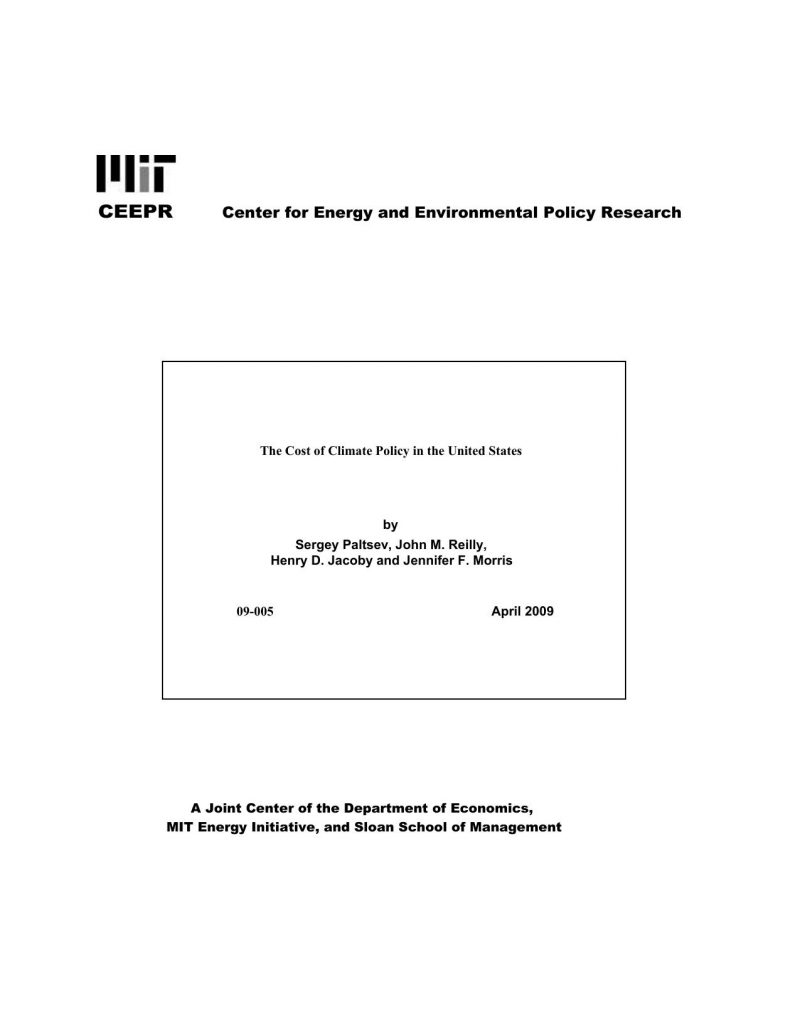The Cost of Climate Policy in the United States
Sergey Paltsev, John M. Reilly, Henry D. Jacoby and Jennifer F. Morris
09-Apr
We consider the cost of meeting emissions reduction targets consistent with a G8 proposal of a 50 percent global reduction in emissions by 2050, and an Obama Administration proposal of an 80 percent reduction over this period. We apply the MIT Emissions Prediction and Policy Analysis (EPPA), modeling these two policy scenarios if met by applying a national cap-and-trade system, and compare results with an earlier EPPA analysis of reductions of this stringency. We also test results to alternative assumptions about program coverage, banking behavior, and cost of technology in the electric power sector. Two main messages emerge from the exercise. First, technology uncertainties have a huge effect on the generation mix but only a moderate effect on the emissions price and welfare cost of achieving the assumed targets. Measured in terms of changes in economic welfare, the economic cost of 80 percent reduction by 2050 is in the range of 2 to 3% by 2050, with CO2 prices between $48 and $67 in 2015 rising to between $190 and $266 by 2050. Second, implementation matters. When an idealized economy-wide cap-and-trade is replaced by coverage omitting some sectors, or if the credibility of long-term target is weak (limiting banking behavior) prices and welfare costs change substantially.



